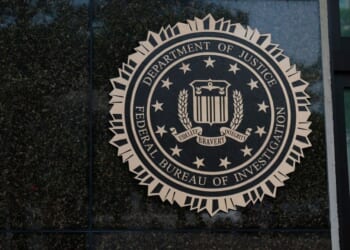Trump’s nuclear orders, while having the aim of increasing America’s nuclear power, require congressional backing and sustained diplomatic engagement to compete with China and Russia.
President Donald Trump has signed a sweeping package of executive orders aimed at reigniting America’s nuclear energy industry. The directives, which target regulatory overhaul, testing reforms, fuel cycle revitalization, and national security deployments, amount to the most aggressive federal push for nuclear power in decades. If implemented fully, they could reshape the US nuclear landscape and reposition the United States as a serious competitor vis-a-vis Russia and China in global nuclear markets.
That global lens is essential. For too long, US nuclear energy policy has focused inward, stalled by regulatory inertia and strategic neglect, while Moscow and Beijing have capitalized on export opportunities. Today, eighty-seven percent of new reactors installed globally are based on Russian or Chinese designs. From Egypt to Bangladesh, full-package nuclear deals, including financing, construction, fuel supply, and training, have become a potent geopolitical tool. Washington, meanwhile, is still trying to fix its own permitting backlog at home while the current US approach forces nuclear developers to run a gauntlet of twenty-five offices across eight federal agencies.
Trump’s orders aim to change that equation. Among the most consequential is a directive for the Department of State to aggressively pursue at least twenty new Section 123 nuclear cooperation agreements, the legal backbone of US nuclear exports. The administration is pushing to expand financing tools for nuclear projects abroad, including through the Export-Import Bank and the Development Finance Corporation (DFC). The White House has also urged the World Bank to revoke its ban on financing nuclear energy projects. These are all steps to challenge the Russian and Chinese playbook, which bundles state-backed financing with turnkey reactor offerings to win over energy-hungry emerging markets.
The orders also target the domestic bottlenecks that have undermined America’s ability to compete. The Nuclear Regulatory Commission (NRC) is now tasked with completing a full regulatory overhaul within eighteen months, including hard deadlines for licensing new reactors and reevaluating outdated radiation standards. Separately, the Department of Energy has been directed to fast-track reactor testing and construction, including a pilot program to build three reactors outside of national labs and make twenty metric tons of High-Assay Low-Enriched Uranium (HALEU) fuel available to support early projects.
For emerging markets, these reforms are more than bureaucratic housekeeping. If the United States can demonstrate that its nuclear industry is capable of moving fast, scaling production, and offering affordable financing, it will become a viable partner for countries that might otherwise default to Russia or China. This is especially critical in regions like South Asia and Sub-Saharan Africa, where electricity demand is surging and nuclear power is increasingly seen as a pathway to clean, reliable growth.
But time is short. Russia’s Rosatom continues to dominate the export market, locking countries into decades-long fuel and service contracts, and it is way ahead in marketing its new small modular designs. China is planning to ramp up its own reactor exports via its Hualong One and Linglong One reactors and expand its state-directed financing footprint. These are not just commercial ventures; they are strategic tools that bind countries closer to Moscow and Beijing.
Trump’s nuclear orders have laid the groundwork for an American comeback. However, the United States will need to follow through with congressional backing and sustained diplomatic engagement. Many of the agencies tasked to expand the nuclear effort — including the Department of State, NRC, and DFC — face steep staffing cuts. Making all these parts of the US government work together also requires proactive White House coordination, and yet the National Security Council staff is also being slashed. If Washington wants to lead, it has to show up.
About the Authors: Hamna Tariq and Todd Moss
Hamna Tariq is a research associate at the Energy for Growth Hub. Prior to the Hub, she was a graduate consultant with the South Asia practice at McLarty Associates, a global consulting firm specializing in international business and government relations, and a graduate consultant with Accenture’s carbon markets division. She has served as a research junior fellow of nuclear strategy in South Asia for the Stimson Center. Hamna holds a Masters in International Affairs from the School of Public and International Affairs (SIPA) at Columbia University and a BA in International Studies from Trinity College.
Todd Moss is the founder and executive director of the Energy for Growth Hub. He is also a nonresident fellow at the Center for Global Development at the Center for Energy Studies at Rice University’s Baker Institute, the Colorado School of Mines’ Payne Institute, and the Institute for Progress. He is a board member of the New Producers for Sustainable Energy and is an honorary trustee of the Institute of Economic Affairs in Ghana. Todd is the author of “African Development: Making Sense of the Issues and Actors” (eds. 2007, 2011, 2018) and “Oil to Cash: Fighting the Resource Curse With Cash Transfers” (2015). He holds a PhD and MSc from the University of London’s SOAS and a BA from Tufts University.
Image: Shutterstock/jaroslava V















